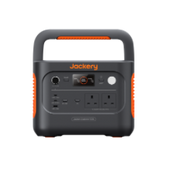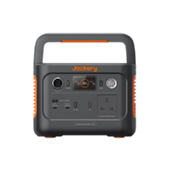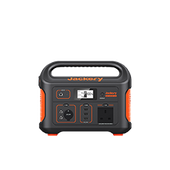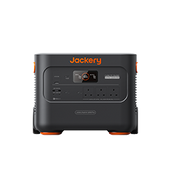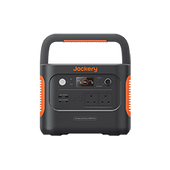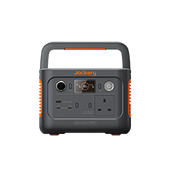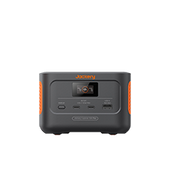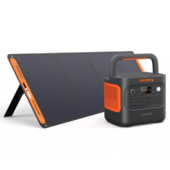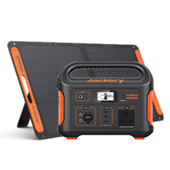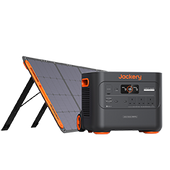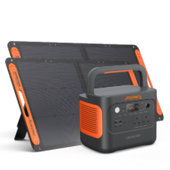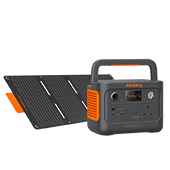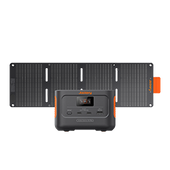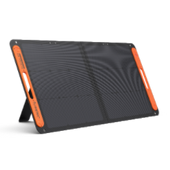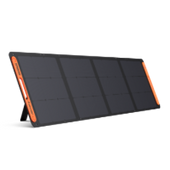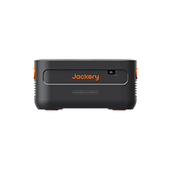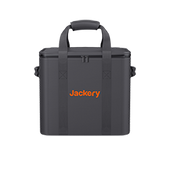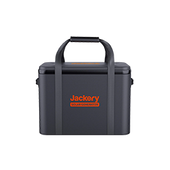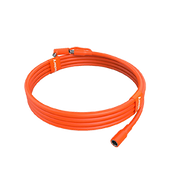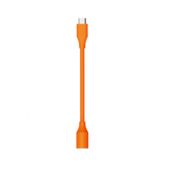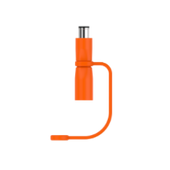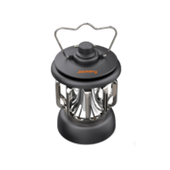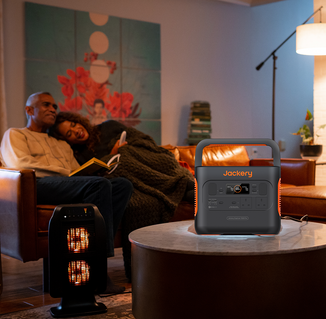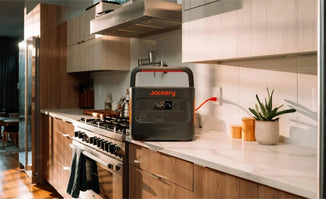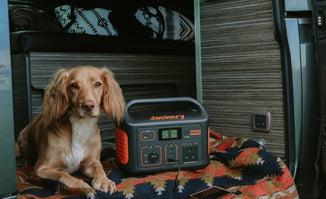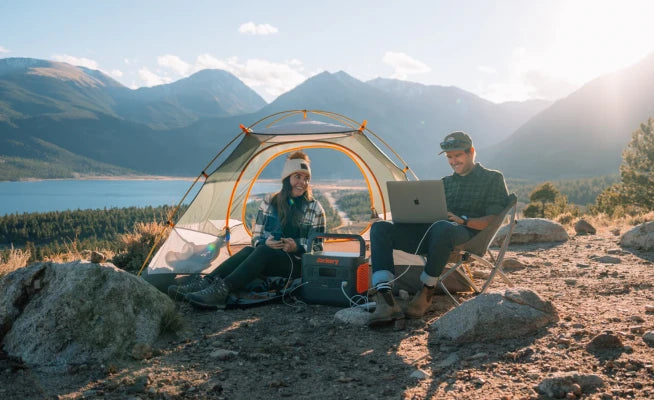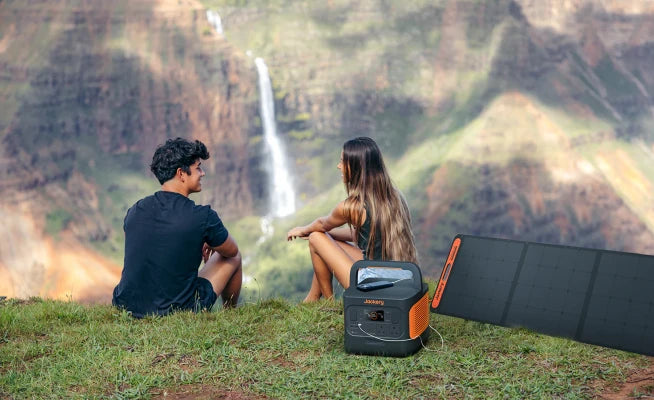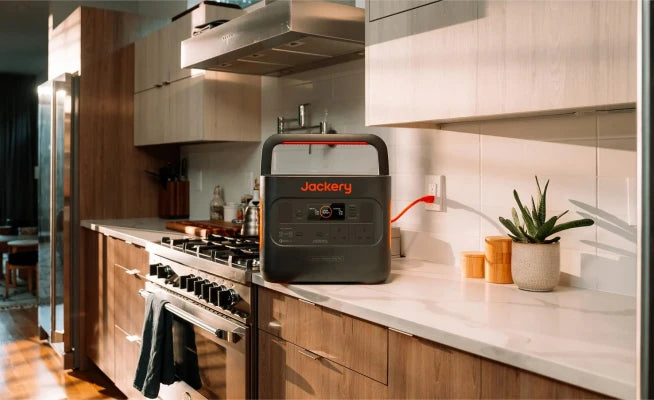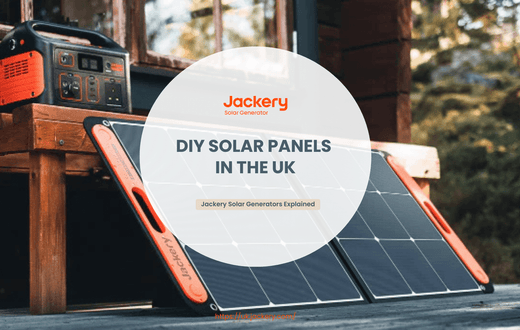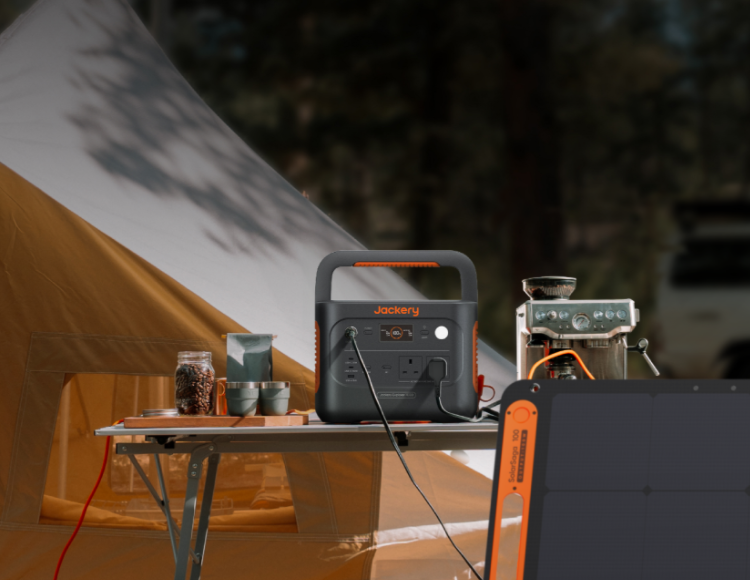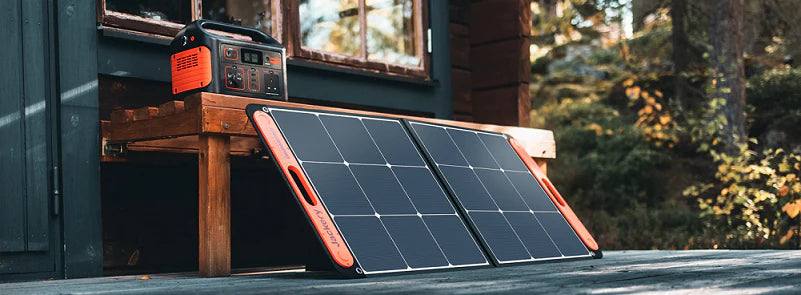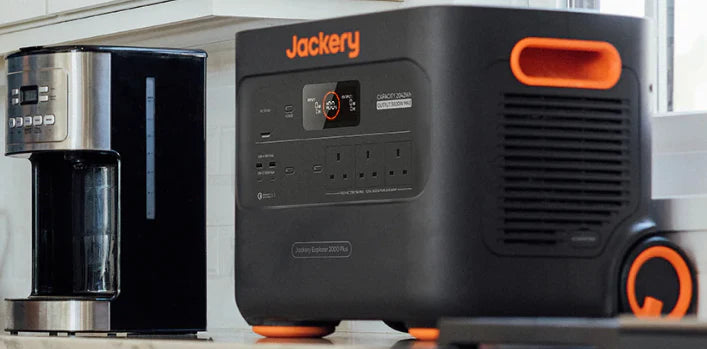There are many reasons why people choose DIY solar panels, from saving money on electricity bills to positively impacting the environment. In short, DIY solar panels provide enthusiasts keen on renewable energy and self-sufficiency with the opportunity to achieve energy independence.
However, before choosing DIY solar panels, it is recommended that households fully understand the relevant policies and technical requirements to ensure the smooth implementation and long-term benefits of the project.
This guide will show you the relevant steps of DIY solar panel installation, from planning the setup and ensuring the roof's suitability to installing the solar panels. If you think DIY is a time-consuming and expensive process, you can consider investing in a solar generator, like Jackery Solar Generator, to charge your appliances and electronics outdoors and indoors with solar energy.
|
Key Takeaways: |
|
- DIY solar panels may be cheaper than commercially produced solar panels, but they require attention to detail. - It is legal to install solar panels yourself, but there are some problems with doing so, such as companies not selling their extra energy to installers who aren't MCS certified. - Doing the installation yourself might be cheaper, but it might not be done right, which could void your manufacturer's guarantee. - From planning to final connection, there are eight steps to install DIY solar panels. - A typical 3kW solar panel system in the UK costs about £4,500 - £5,500. The costs can rise if you add battery storage. - Compared to the higher costs of DIY solar panels, choosing Jackery Solar Generator 2000 Plus and 1000 Plus could be a wise choice since they range from 1.25 to 12 kWh and can power the majority of appliances at lower prices. |
What Are DIY Solar Panels?
DIY solar panels refer to solar energy systems built and installed by individuals or enthusiasts rather than purchased from commercial manufacturers. These DIY projects involve assembling and connecting individual solar cells to create a fully functional solar panel.
Although DIY solar panels may be cheaper than commercially produced solar panels, they require close attention to detail. At the same time, unlike commercially sold solar panels, DIY solar panels may not be as effective, durable, or have a warranty. Doing your homework beforehand is a prerequisite to ensuring a successful and safe DIY solar panel installation.
Pros & Cons of DIY Solar Panels
The following are the pros and cons of DIY solar panels:
Pros of DIY Solar Panels:
You can avoid paying for labour and buy supplies for less than an installer would charge. Solar panel kits are sometimes more expensive than solar panels alone and tend to produce less power. You can save up to £600 to £1,000 on wages by building your solar system, but it will take a lot more work and is easy to mess up if you don't know what you're doing.
The cost of DIY solar panel kits and sets may be lower, and they work better for RV solar panels than for homes. They're easy to put on and take off if needed.
When you place your solar panels, you can put them up however you like. If you know how to build things, you can make your solar panel arrays or roof mounts exactly how you want them and change them as often as you wish.
Cons of DIY Solar Panels:
You won't be able to get SEG earnings because many energy companies only let you get SEG earnings for installing MCS-certified solar panels. You might lose between 5p and 24p for every kilowatt you send back to the grid.
A skilled professional can help you in many ways you might not be able to. If you don't place your panels or solar kit correctly, they may not last as long and will lose their power more quickly.
Most solar panel makers don't offer warranties for systems that the customer fits. If you want to ensure nothing will go wrong, installing your solar panels in the UK might not be the best idea.

Can I Install Solar Panels Myself?
Yes. You can install solar panels. Putting in ground-based bases or a do-it-yourself kit can make it even easier. It can be harder to install on a roof because you need lag bolts and good drilling skills. There are some risks to installing panels yourself, too. For example, some energy companies won't let you earn money for producing extra energy unless you have a certified installer, and the company that made the panels could void your guarantee.
Also, you should only try to run something yourself if you know what you're doing. Not only could there be technical problems, but it could also be dangerous if you don't have the right tools, especially if you're putting solar panels on a roof.
On the other hand, DIY solar panels have never been easier. Apps and other online tools help you figure out how many solar panels you need. If you want to use a do-it-yourself kit, most of the tools you'll need are in your toolbox or to measure things.
Still, it can be a lot of work, especially if you want to put in off-grid solar panels that need to be placed precisely and have constant power.
Choosing a solar generator, like Jackery Solar Generator, is also a wise option for using solar energy without complex installation and maintenance. The only thing you need to do is connect solar panels with a portable power station. Besides, DIY solar panels can only work on sunny days, but the solar generator can work on rainy days or even at night since its power station can be refuelled by solar panels, wall outlets, or carports.
Is It Legal to Install My Solar Panels in the UK?
You can legally put up your solar panels in the UK in this way. In some places, you might need permission from the local government, but in most places, no rules stop you. The rules might differ if you live in a protected area, so it's best to check with the local government.
If you rent, you should always get permission from your owner before installing your solar panels. Also, solar panels for flats might be limited by building codes.
DIY Solar Panel UK Building Regulations for Home
When considering a DIY solar panel installation in the UK, it is vital to understand the regulations and permits required.
A solar panel installation on a home in England and Wales will most likely be considered a "permitted development" (meaning no planning permission will need to be applied). Similarly, installing solar panels on the roof or walls of a private home is also considered permitted development and does not usually require planning permission.
However, planning permission may be required for a DIY solar panel installation in certain areas. For example, historic buildings, conservation areas or areas of outstanding beauty may require planning permission. Check with your local council or planning department for guidance in these cases. In general, check with your local authorities if you are unsure.
Finally, UK building regulations also cover several key areas for DIY solar panel installations, including structural integrity, electrical safety, fire risk and energy efficiency.
• The roof must be assessed for its ability to support the solar panels. (For older or damaged structures, a structural engineer may need to be consulted.)
• Fire safety considerations (pay particular attention to the potential impact of the installation on the spread of a roof fire.)
Following the above regulations can protect your DIY solar panels and optimise their performance and lifespan. Professional advice or consultation is essential to the DIY solar panel process.
DIY Solar Panel Installation Process in the UK
More and more British families are installing solar panels to reduce their electricity bills. The following are the detailed steps for DIY solar panels.

Step 1: Preliminary preparation and planning
Before you start installing DIY solar panels, you need to do some relevant preparation and planning.
Calculate Energy Needs
Determine the number of solar panels installed based on the household's electricity consumption. Most British households choose a 3kW to 4kW solar panel system.
If you're hooked up to the grid, you can look at your energy bills to see how much you use every day. A number on your bill will tell you how many Wh or kWh were used that month. To get even better results, use the last three months' worth of bills to figure out how much you usually use each month. To find your daily usage, divide the amount you use each month by the number of days in a month.
Evaluate the Installation Location
Choose a south-facing, unobstructed roof or ground location to ensure the solar panels receive the maximum sunlight.
Design Your Solar Panel System First
You need to choose whether to use solar power for all or some of your daily energy needs. You can build a solar system that doesn't connect to the power grid at all, so it can power all of your devices without any help from the grid.
You can also build an on-grid solar system, which is also called a grid-tied system and only uses solar power for a small part of your daily needs.
You need a solar lithium battery if you are making a system that doesn't connect to the power grid. If you're on the grid, you don't need a battery bank because of the Smart Export Guarantee (SEG). The only bad thing about an on-grid solar system without solar battery storage is that you won't have backup power in an emergency.
Step 2: Prepare Tools
Before you start installing DIY solar panels, it is crucial to make sure you have the right tools.
|
List of Tools Needed for a DIY Solar Panel System |
|
|
Basic Tools |
Screwdriver set Wrench Pliers Insulating tape Tape measure Level Marking pen Electric drill Angle grinder |
|
Special Tools |
Solar mounting brackets Junction boxes Cable cutters PV testers Heat guns Welding tools Sealant guns Solar panel cleaning tools |
|
Safety Tools |
Safety glasses Gloves Hard hat Non-slip shoes Dust mask |
|
Other Auxiliary Tools |
Ladder Trolley Toolbox |
Tip 3: Purchase the Essential Components
You can start getting all the parts you will need for your installation once you know how much power you need each day and the best panel output.
• Solar panels
• Solar batteries
• Solar inverter
• Solar charge controller (MPPT or PMW)
• Connectors, fuses, and others
Tip 4: Install the Bracket and Solar Panels
First, accurately measure and mark the installation position of the bracket on the roof or ground. Secondly, use screws and expansion bolts to fix the bracket in the selected position firmly.
You must find the rafters and mark them so you can place kits on the roof. These are the base pieces for your solar system, on which you can put the metal layer that will hold up the array. Fitting a thin sheet of material to act as the connection point and stop leaks is part of this installation.
Now that the metal base is made, the rest of the steps are the same as when the roof mounts were put on. The support frame gives your panels a base, and you'll attach your racking rails.
It is vital to follow the instructions when installing the DIY solar panel. First, install the solar panels on the bracket one by one and fix them with bolts and nuts. Then, connect the cables between the panels, which should be routed along the edge of the bracket or roof to avoid exposure to the external environment.
Step 5: Install Equipment Such as Solar Inverter and Batteries
Solar inverters should be installed indoors in a cool, dry, ventilated place. The solar panel's DC power should be connected to the solar inverter through cables. The off-grid system must also connect the charge controller and battery to ensure all equipment is installed and connected correctly.
After the panels are attached to the mount, the last step in the installation process is to connect the system parts according to your "planset." The wires from your inverter(s) will go through a junction box and a PV disconnect switch before ending at the circuit breaker box in your home. This is where your system links to the power grid.
Step 6: Set up the circuit
Setting up the solar system's circuit is a technical task. Unless you have the necessary expertise, it is strongly recommended that you ask a professional electrician to handle the circuit installation.
It's almost done. Your inverter's lines need to go through a junction box and a switch that turns off the solar panels. They should end at the circuit breaker box in your home that connects you to the power grid.

Step 7: System Testing and Operation
Before turning on the system, thoroughly check whether all devices and cables are firmly connected to ensure no exposed cables or electrical defects. In addition, the power is turned on, and the operation of each part is checked step by step.
Step 8: Connect to the Internet
If your system is grid-connected, you need to contact the local utility provider to connect your solar system to the grid.
The Cost of DIY Solar Panels in the UK
In recent years, households in the UK have faced increasing pressure on their energy bills. As a result, more and more British households are choosing DIY solar panels. However, many people do not have a detailed understanding of the cost of DIY solar panels. The following section will analyse the cost of DIY solar panels in the UK and the related factors.
A typical 3kW solar panel system in the UK costs about £4,500 - £5,500. The costs can rise if you add battery storage. Compared to DIY solar panels, there is an alternative way to use solar energy, whether at home, camping, or RVing—that is choosing a solar generator, which is lower cost than a DIY kit. The following table shows the price of professionally installed solar panels in the UK.
|
System Size |
Solar Panel Costs |
Installation Costs |
Battery Costs |
|
3 kW |
£4,500 - £5,500 |
£1,200 - £1,800 |
£5,000 - £8,000 |
|
4 kW |
£5,000 - £6,000 |
£1,600 - £2,400 |
£8,000 - £9,500 |
|
5 kW |
£7,500 - £8,500 |
£2,000 - £3,000 |
£9,000 - £10,000 |
|
6 kW |
£9,500 - £10,500 |
£2,400 - £3,600 |
£10,000+ |
(Data Source: Green Match)
DIY solar panels can save installation costs compared to professionally installed solar panels. Therefore, the above data shows that the cost of DIY solar panels in the UK can be used as a reference for professionally installed solar panels without installation costs.
Factors Affecting the Cost of DIY Solar Panels in the UK
DIY solar panels are gradually gaining attention in the UK. However, the cost of DIY solar panels is affected by various factors.
• Raw material prices
• Import tariffs and transportation costs
• Labor costs
• Equipment and tool costs
• Technical difficulty
• Solar subsidies
Jackery Solar Generators Explained
In the UK, DIY solar panels require time and effort to learn how to use solar and electricity tools. Because of strict rules, do-it-yourself installation might not be possible in some places, and it's harder for homes that want to set up big solar systems.
At this time, we recommend using a solar generator alternatively. A solar generator, like Jackery Solar Generator, works as a portable solar system to convert sunlight into electricity with Jackery Solar Panels and a Portable Power Station.

Solar generators offer many benefits, such as portability, ease of use, and lack of maintenance. When Jackery builds solar power stations, we include a smart BMS (Battery Management System) that keeps the electronics safe from short circuits, low and high voltage, and temperature changes. The latest version of ChargeShield technology has three charging modes to keep you powered up at all times and anywhere.
|
Appliances |
Working Hours |
|
|
Jackery Solar Generator (1.25-5Wh) |
Jackery Solar Generator 2000 Plus (2-12 kWh) |
|
|
Refrigerator (700W) |
1.53-6.1H |
2.4-14.6H |
|
Computer (200W) |
5.4-21.25H |
8.5-51H |
|
Phone (10W) |
107.1-425H |
174-1020H |
|
Lighting (50W) |
21.42-85H |
34-204H |
|
TV (100W) |
10.7-42.5H |
17-102H |
Jackery Solar Generator 1000 Plus
As mentioned above, a 3kW DIY solar panel system can cost £4,500 - £5,500, three times that of a 3kW solar generator. The Jackery Solar Generator 1000 Plus has an expandable capacity from 1260Wh to 5 kWh, which is enough for powering household appliances in the UK. With its portability (compact size and 32 lbs weight), it can satisfy your home power needs and outdoor activities power supply.

Expandable Capacity: Using Jackery's proprietary technology, the Solar Generator 1000 Plus's capacity can be augmented from 1.26kWh to 5kWh by adding up to three supplementary battery packs. Furthermore, it features a maximum output of 2000W, which is 20% greater than standard 1kWh LFP power stations.
Never Worry about Bad Weather: The MPPT technique guarantees 99% efficiency in solar charging. There are several ways to recharge the Explorer 1000 Plus. A wall charge from 0 to 100% of the battery requires 100 minutes, while solar charging with four SolarSaga 200W solar panels takes 2 hours. With car charging capabilities, concerns over power disruptions will be alleviated.
Innovative ChargeShield Technology: Jackery's ChargeShield rapid charge technology pioneers the industry with a stepped variable-speed charging algorithm, improving safety and extending battery pack lifespan by 50%. At a high temperature of 45℃, the power station can achieve a full charge in roughly 5.5 hours.
Jackery Solar Generator 2000 Plus
Jackery Solar Generator 2000 Plus is the perfect home backup power solution with an expandable capacity from 2 to 12 kWh. Can you imagine the power capability of 12 kWh for a home which could support a four-bedroom house for several days? If you think Solar Generator 1000 Plus can not satisfy your needs, this one could be the best!

Expandable Powerhouse for Your Appliances: The Jackery Explorer 2000 Plus enables the addition of extra battery packs, increasing the capacity from 2 kWh to an impressive 12 kWh, thereby significantly satisfying your power needs. This solar product has a remarkable output of 3000W; almost all essential appliances are powered during the storm season.
Higher Resistance & Reliability: The Explorer 2000 Plus stands out as a groundbreaking add-on battery pack that offers the convenience of recharging through solar panels, wall outlets or carports. This feature increases versatility, boosts charging efficiency, and shortens charging time. Also, it can be taken indoors safely compared to other traditional generators.
Safe to Use with ChargeShield: ChargeShield is Jackery's advanced fast charge technology, featuring 62 protective mechanisms, 12 protective algorithms, and four types of physical safety protection. This technology uses a unique stepped variable-speed charging algorithm to enhance safety and extend battery pack lifespan by 50%.
Maintenance for DIY Solar Panels
Correct maintenance techniques can ensure the regular operation of the DIY solar panel system, help extend its lifespan, and bring continuous and stable green energy to your home. The following tips can effectively maintain the DIY solar panels to ensure long-term and efficient operation.
Tip 1: Regular cleaning
It is usually recommended to clean when the light is weak, such as in the morning or evening, to avoid the risks of operating in strong sunlight. In addition, soft tools such as sponges, cotton towels, etc., can prevent scratching or corrosion on the panel's surface. Avoid using complex, sharp tools or corrosive, alkaline organic solvents.
Tip 2: Check the connection wires and connectors
Regularly check the panel's plugs and connectors for damage or ageing. In addition, please ensure that the connection and ground wires in the junction box are in good contact and are not loose, falling off, or corroded. If problems are found, repair or replace the damaged parts in time to avoid current interruption or leakage.
Tip 3: Observe the power generation
Pay attention to the solar panel's power generation. If an abnormal decrease in power generation is found, it may be because the panel surface is blocked or malfunctioning. If you encounter a fault or battery inverter failure, do not repair or disassemble the solar panel yourself; seek professional maintenance personnel to solve the problem.
Tip 4: Check the temperature regularly
During the hot season, please check the solar panel's temperature regularly to ensure it operates within the normal range. Avoid using solar panels at night or in low-light environments to avoid damaging components such as solar modules, electric controllers and batteries.
Tip 5: Bracket inspection
Check whether the solar panel bracket is loose or broken, especially after strong winds. If it is, tighten or replace it in time to ensure the panel is installed firmly.

Are DIY Solar Panels a Good Idea for UK Homes?
In recent years, DIY solar panels have gradually gained attention among British households. For British residents, DIY solar panels are an environmentally friendly and economical choice, but whether this decision is wise needs to be considered from multiple angles.
Economic Benefits: DIY solar panels require a certain amount of investment in the early stage, including the purchase of equipment, materials and installation costs. However, the cost of solar panels has declined significantly in recent years. Therefore, DIY solar panels in the UK can enjoy long-term electricity cost savings.
Environmental Benefits: DIY solar panels reduce dependence on external electricity, overall energy consumption, and environmental pollution for most British households. An average household solar panel system can reduce carbon dioxide emissions by about 1.8 tons annually.
Technology and Maintenance: DIY solar panels are technically challenging. Learning relevant technical knowledge may take some time and effort for households without relevant experience.
For example, during the installation process, the orientation of the roof, the tilt angle, and the local climate conditions must be considered. In addition, solar panel maintenance, such as regular cleaning and inspection, cannot be ignored.
Policy Support: The British government has provided several policy supports to promote household solar power generation. These policies make it more secure and convenient for families to install and use solar panels.
DIY Solar Panels in the UK FAQs
The following are the frequently asked questions about the DIY solar panels in the UK:
1. Can I install solar panels yourself in the UK?
Installing solar panels yourself in the UK is possible. The labour cost is lower, but there are also many disadvantages.
The disadvantages of installing solar panels yourself are as follows:
Safety risks (electrical risks and structural risks)
Efficiency and performance are not guaranteed
Lack of quality assurance
No access to SEG
2. Will a 5kW solar system run a house in the UK?
Yes. A 5kW solar system can generate about 4,250kWh of electricity annually. (Source: green match.) However, the amount of electricity a solar system generates depends on location, equipment performance, installation, etc. Therefore, the electricity generated by a 5kW solar system is sufficient to meet the needs of a large family in the UK.
3. How many solar panels do I need to be self-sufficient n the UK?
How many solar panels you need depends on your home's annual electricity consumption, the efficiency of the solar panels, the number of sunshine hours in your location, and the size of your home.
On average, a 1-2 bedroom house will require 4 to 8 solar panels (2-3kW system), while a 2-3 bedroom house will require around 8-13 solar panels (4-5kW system), and a 4-5 bedroom house will require 13 to 16 solar panels.
|
House Size |
Solar System Size |
Annual Energy Consumption |
Number of Solar Panels (350W) |
|
1-2 Bedrooms |
2-3 kW |
1,800 kWh |
5-8 |
|
2-3 Bedrooms |
4-5 kW |
2,700kWh |
10-13 |
|
4-5 Bedrooms |
6 kW |
4,100 kWh |
16 |
Remember that the above figures are based on average conditions, and actual needs may vary depending on the sunlight your location receives, the efficiency of your solar panels, etc.
Final Thoughts
In summary, DIY solar panels are flexible, cost-effective, educational, environmentally friendly, and hands-on. Therefore, DIY solar panels in the UK can be challenging but rewarding. However, building a solar system requires technical knowledge and experience. If you are unsure about any aspect of the process, it is best to seek professional help. Or you can choose a Jackery Solar Generator at first to try solar energy conveniently.



